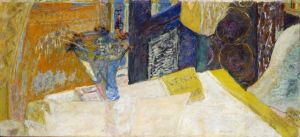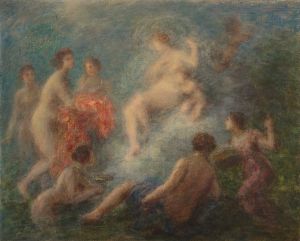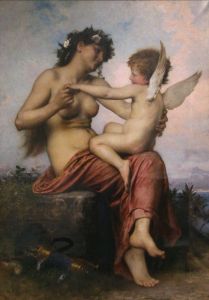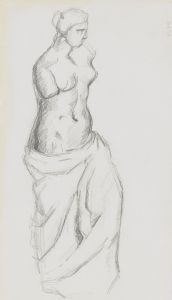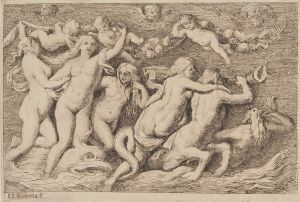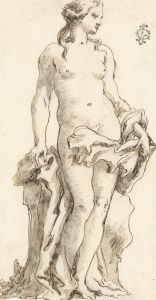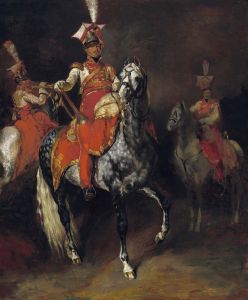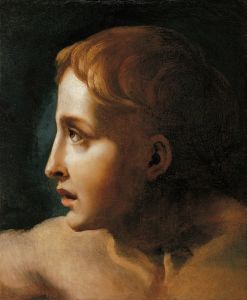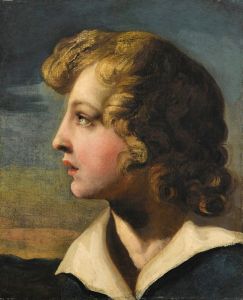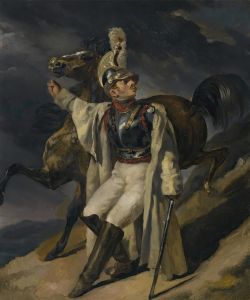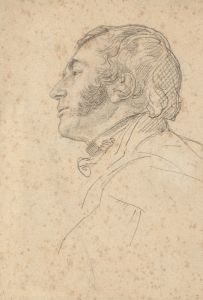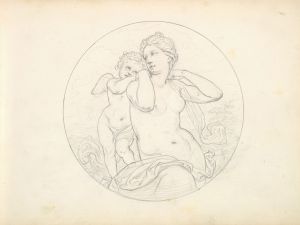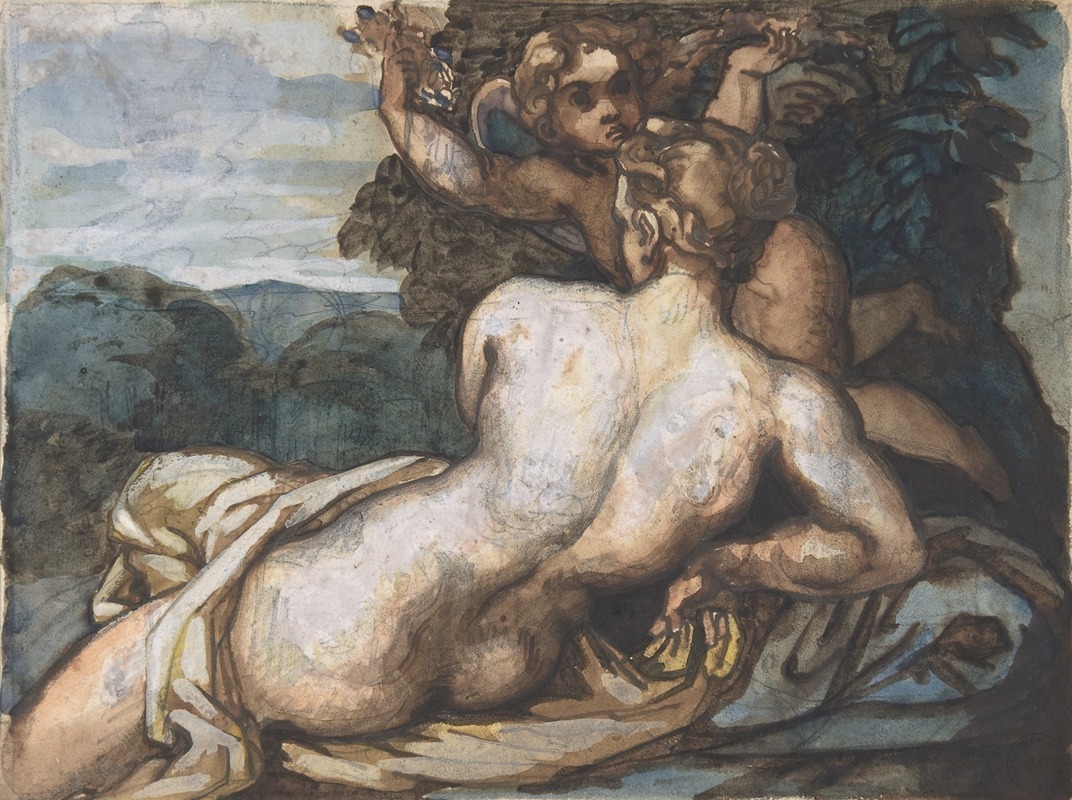
Venus and Cupid in a Landscape, after Annibale Carracci
A hand-painted replica of Théodore Géricault’s masterpiece Venus and Cupid in a Landscape, after Annibale Carracci, meticulously crafted by professional artists to capture the true essence of the original. Each piece is created with museum-quality canvas and rare mineral pigments, carefully painted by experienced artists with delicate brushstrokes and rich, layered colors to perfectly recreate the texture of the original artwork. Unlike machine-printed reproductions, this hand-painted version brings the painting to life, infused with the artist’s emotions and skill in every stroke. Whether for personal collection or home decoration, it instantly elevates the artistic atmosphere of any space.
"Venus and Cupid in a Landscape, after Annibale Carracci" is a painting by the renowned French artist Théodore Géricault. This artwork is a testament to Géricault's engagement with the classical themes and styles that were prevalent during his time, as well as his admiration for the Italian Baroque master Annibale Carracci.
Théodore Géricault (1791–1824) was a pivotal figure in the transition from Neoclassicism to Romanticism in French art. He is best known for his masterpiece "The Raft of the Medusa," which exemplifies the dramatic intensity and emotional depth characteristic of Romanticism. However, Géricault's oeuvre also includes a variety of subjects and styles, reflecting his diverse interests and influences.
"Venus and Cupid in a Landscape" is inspired by the works of Annibale Carracci (1560–1609), an influential Italian painter who played a crucial role in the development of Baroque art. Carracci was known for his ability to blend the naturalism of the Renaissance with the dynamism and emotion of the Baroque, creating compositions that were both harmonious and expressive. His depictions of mythological subjects, such as Venus and Cupid, often conveyed a sense of idealized beauty and classical grace.
In this painting, Géricault pays homage to Carracci by reinterpreting one of his compositions. The subject matter, Venus and Cupid, is a popular theme in Western art, symbolizing love and beauty. Venus, the Roman goddess of love, is often depicted with her son Cupid, the god of desire, who is typically shown as a cherubic figure with wings and a bow and arrow. The landscape setting provides a serene and idyllic backdrop, enhancing the romantic and timeless quality of the scene.
Géricault's rendition of "Venus and Cupid in a Landscape" demonstrates his skill in capturing the essence of Carracci's style while infusing it with his own artistic sensibilities. The painting likely reflects Géricault's study of classical art and his appreciation for the technical and thematic achievements of the Italian masters. It also illustrates his ability to adapt and reinterpret existing works, a common practice among artists seeking to learn from and build upon the legacy of their predecessors.
While specific details about the creation and provenance of Géricault's "Venus and Cupid in a Landscape" are limited, the painting remains an important example of his engagement with classical themes and his exploration of different artistic influences. It highlights Géricault's versatility as an artist and his capacity to navigate between different styles and subjects, contributing to his reputation as a leading figure in the Romantic movement.
Overall, "Venus and Cupid in a Landscape, after Annibale Carracci" is a significant work that underscores the enduring appeal of classical mythology in art and the ways in which artists like Géricault have drawn inspiration from the past to create new and compelling interpretations.





